![r/MapPorn - Sarajevo survival map during the 1992-1996 siege, Bosnia. It marks tank targets, paths where to avoid snipers, and a secret tunnel under the city [4733×3358] r/MapPorn - Sarajevo survival map during the 1992-1996 siege, Bosnia. It marks tank targets, paths where to avoid snipers, and a secret tunnel under the city [4733×3358]](https://substackcdn.com/image/fetch/$s_!U1TJ!,w_1456,c_limit,f_auto,q_auto:good,fl_progressive:steep/https%3A%2F%2Fsubstack-post-media.s3.amazonaws.com%2Fpublic%2Fimages%2F7049dd1b-6055-416a-b3df-5f53b2f03eea_640x454.jpeg)
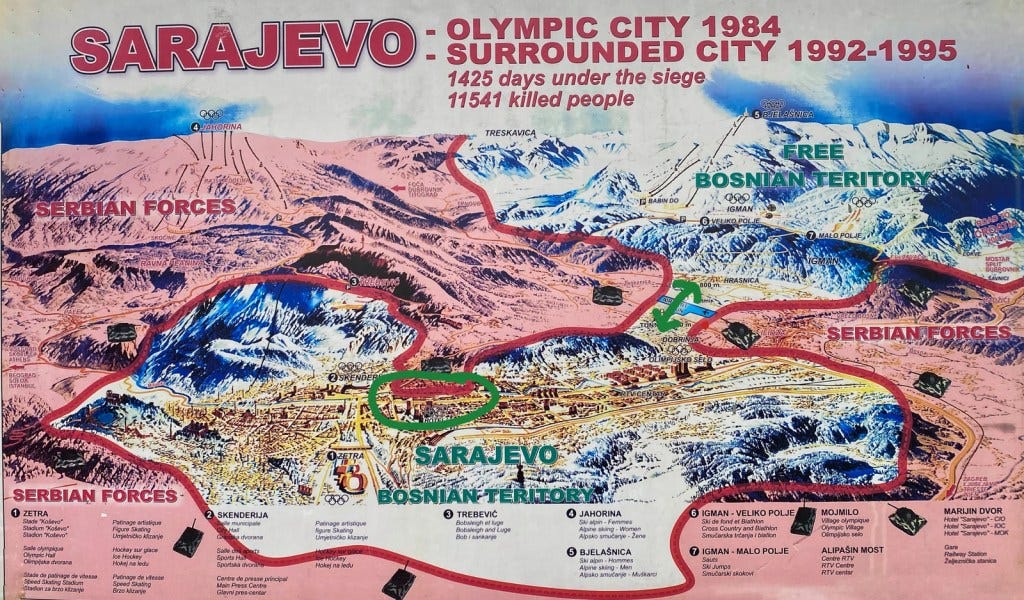
Sarajevo is tentatively historical. No. Sarajevo is on a list of tentative historic sites to be recognized by UNESCO, the United Nations Educational, Scientific and Cultural Organization. It’s been on the tentative list since September 1, 1997, less than two years after the conclusion of the 1,425 day siege that decimated the city during the Bosnian War. As of 2019, Sarajevo is also a member of the Creative City Network and a UNESCO City of Film, due to the Sarajevo Film Festival, which, incredibly, began during the siege in 1995. UNESCO is not the end all, be all of historical significance but it is indicative of something. Here’s what is written on their website about Sarajevo:
“Beauty of a city is possible not only with numerous architectural monuments but also in interpretation of synthesis of living harmony and in preservation of varieties, and Sarajevo is such, unique, unrepeatable and united open site, the world city.”
The Convention Concerning the Protection of the World Cultural and Natural Heritage was adopted by UNESCO in 1972, with the first World Heritage Sites officially designated in 1978. And while the preservation work is admirable, the list is only human. Just as soon as humans can create something, we can fuck it up. World Heritage status can have dire consequences and as noted by historian Chloé Maurel, it is culturally biased, politically motivated, sometimes meaningless, and feeds a type of mass tourism that can destroy sites it was designed to protect. Recently, it has become more of a brand than an actual conservation effort. In 2018, Stanford anthropology professor and UNESCO researcher Lynn Meskel wrote of its dwindling power, “the number of World Heritage sites will just continue to multiply with less and less resources dedicated to conserving and monitoring them. For countries, it’s a win-win. They get their sites inscribed, and no one is really checking up on how they manage them.”
UNESCO defines heritage as, “our legacy from the past, what we live with today, and what we pass on to future generations.” As a country, Bosnia and Herzegovina already contains five designated UNESCO World Heritage Sites and six expressions of Intangible Cultural Heritage. Tangible like the Stari Most bridge in Mostar, built in the 16th century then destroyed in the Croat-Bosniak war and rebuilt in 2004. Intangible like the Zmijanje embroidery Bosnian-Serbian women practice on Mt. Manjača. Since 2005, considered sites must reach one of ten (previously six) criteria for UNESCO World Heritage status. Sarajevo was submitted under the criteria of a “unique example of traditional human living and settling.” Walking through the city, you cannot help but feel this to be true.
It would be a lie to say I really got a handle on Sarajevo during our brief stay, but I did get a strong whiff of history. As I mentioned in part one of this travelogue, I knew basically nothing about the city before this visit. Andrea, my girlfriend, tour guide, and Sarajevo fanatic, gave me the bullet points.
Because of its significance across religions, Sarajevo has been referred to as the “Jerusalem of Europe”, containing Mosques, Synagogues, Catholic, and Eastern Orthodox churches all in the same neighborhood.
During the longest siege of a capital city in modern history, Sarajevo captured the heart of the country. Literally trapped between the Bosnian Army and Srpska forces, Sarajevan’s suffering, the killing of 11,541 residents, including 1,500 children, was a microcosm of the entire country's conflict.
These markings on the ground are called Sarajevo Roses. Mortar shells left holes in the concrete that were later filled with bright red resin to serve as war memorials.
It’s is a food destination too. Baščaršija, the 15th century Ottoman bazaar acts as a gastronomic hub, filled with baklava stalls, ćevabdžinicas, and buregdžinicas that feed tourists and locals alike.
Sarajevo’s tram system is the second oldest in the world after San Francisco’s, opening on New Years Day in 1885. It served as a testing ground for the tram system in Vienna, then capital of the Austro-Hungarian Empire.
Angeline Jolie attended the Sarajevo Film Festival and stood like, right there, on those steps, right there!
That was my introduction to Sarajevo, facts flying out of Andrea’s mouth as we strolled around. Even without narration, that is my preferred mode of travel. Nothing teaches you more about a city than walking through it. For lack of a better word, the city is heavy. It is steeped in recent and tragic history. There are memorials everywhere. There is a genocide museum. What I noticed first were the mosques, then the cemeteries. Sarajevo lies at the bottom of a valley, it’s looming hills pockmarked with gravestones, it is literally surrounded by the dead.
On the drive in we passed by the astounding Bare Cemetery, it’s 33 hectares making it one of the largest in Europe. During the siege it was too far from the city center for residents to bury their dead safely, so closer ones started popping up. Just behind Baščaršija, we visited the Kovači cemetery and memorial, filled with graves of Bosnian Army soldiers killed during the war. In the center is the tomb of Alija Izetbegović, the first president of the independent Republic of Bosnia and Herzegovina, who signed the Dayton Accords that ended the war. Across the river is the Old Jewish Cemetery of Sarajevo, the second largest Jewish cemetery in Europe, which dates back to 1630 and, surprise, is on the list of tentative UNESCO World Heritage Sites nominated by Bosnia and Herzegovina. During the siege it was on the frontline and used as an artillery position by Bosnian Serbs.
If things sound dark, that’s because it is dark, but the city is also more than it’s dead. Even in February, Sarajevo has life to it. Not necessarily nightlife, but life nonetheless. Like cities the world over, a river runs through it. Here that river is the Miljacka and life has sprung up on both sides of it’s banks. Baščaršija is a pleasure to walk through, completely of a different time, and packed with people looking for a good meal, probably at a ćevabdžinica named after a famous football player. These grill shops specialize in cevapi, which, just like the city itself, sits on a UNESCO tentative list, this time for Intangible Cultural Heritage. Me being me and guts being guts, I opted for grilled kidneys with the caul fault still connected. They came out charred and delicious, but the fresh cabbage salad topped we ate on the side might have made the meal for me.
We took the funicular up Trebevic Mountain to the site of the 1984 Winter Olympics, a golden era in the city's history. It was in Yugoslavia then, prosperous and peaceful. Now the site offers beautiful views of Sarajevo, plus the opportunity to walk down the Olympic bobsled track, still standing and covered in graffiti. Again, there’s history and heritage showing it’s face, wagging it’s finger at you. Cool Runnings wasn’t filmed there, but you can pretend. You can even luge down it if you really want, like this guy.
We spend two days and three nights in the city. On the first night we were tired, on the second we saw the documentary film Blum: Masters of Their Own Destiny (dir. Jasmila Žbanić) with what felt like the entirety of the local high school’s 10th grade class, teachers included. It was as much a field trip for me as it was for them.
The film is about Emerik Blum, Sarajevo native and founder of ENERGOINVEST, one of Yugoslavia’s most successful engineering companies. Like the top Letterboxd review of the film states, “Emerik Blum was that bitch”. He focused on the personal development and professional growth of the employees, working in a very egalitarian manner. The company itself thrived on the global stage, acting as a capitalist enterprise outside of Yugoslavia, competing for and winning, huge engineering contracts the world over. It’s what they called “pink" communism, and looking back on it now, it seems ideal. Blum didn’t pay himself an exorbitant salary and the company had a delightful jingle. The closest thing we have to Blum today is the Costco founder Jim Sinegal fixing the price of their hotdogs at $1.50.
On our last night in town we visited the Sarajevo Brewery, which I recently learned contains a well that was an important water supply for residents during the siege. You can, and should, read Drinking in Strange Places piece on the brewery and her trip to Sarajevo here. I’ll just say that the bar is in a beautiful room and the beer is refreshing.
Leaving Sarajevo is day-long affair. There is a 10 hour bus back to Ljubljana and crossing the EU border is slow. That’s OK. The city is worth it. The heritage, tangible and otherwise, recognized or not, is inherent; both haunting and hopeful in the same breath. There’s a public fountain in Baščaršija that is supposed to call you back to Sarajevo if you drink from it. We drank to the future, like the city does everyday. Yes, there is history here, there is also a tentative legacy being built, what UNESCO calls an “irreplaceable source of life and inspiration.”
Before we leave, we already decide on returning. The Sarajevo Film Festival is in August. How could we miss that?


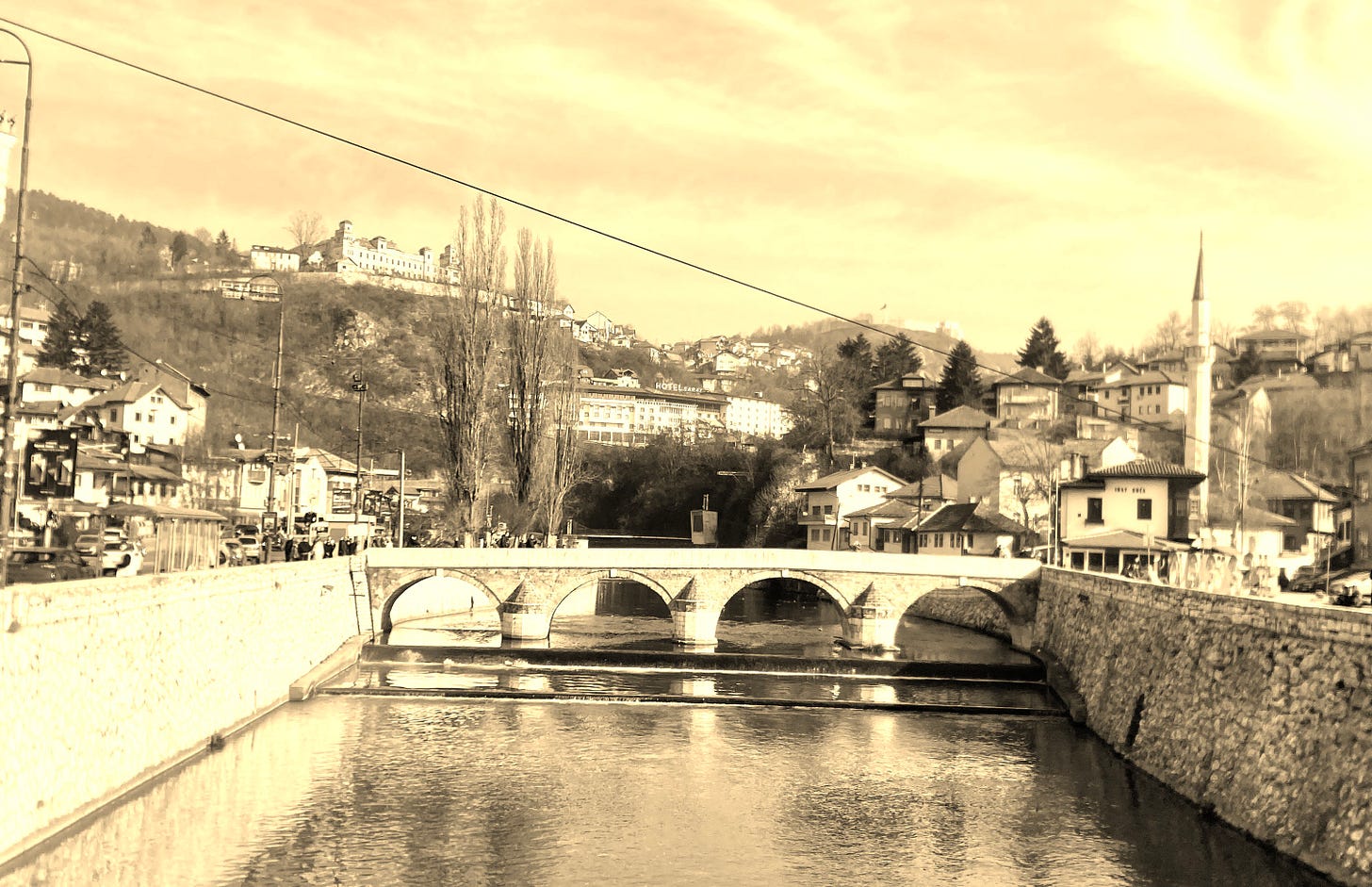
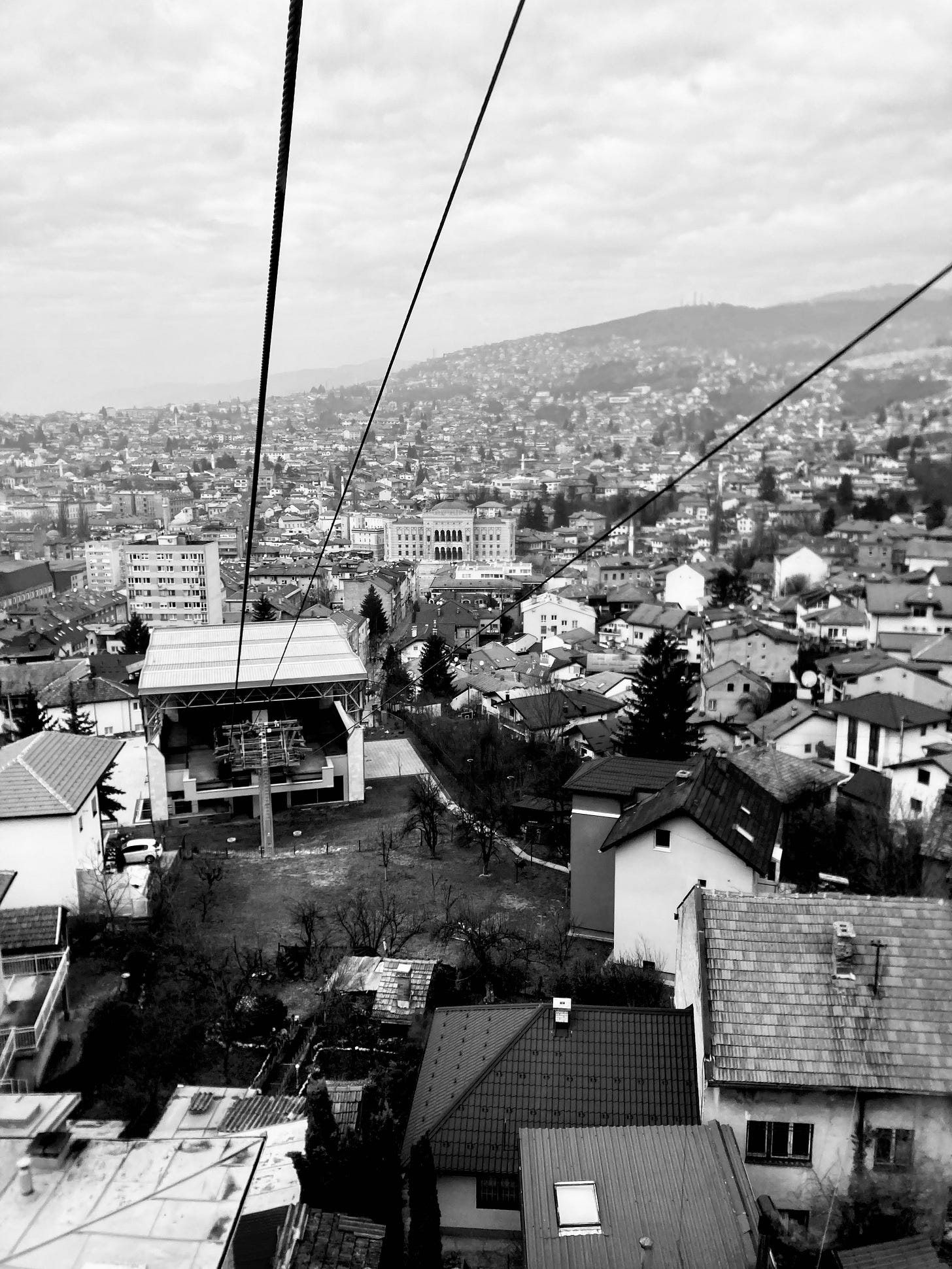
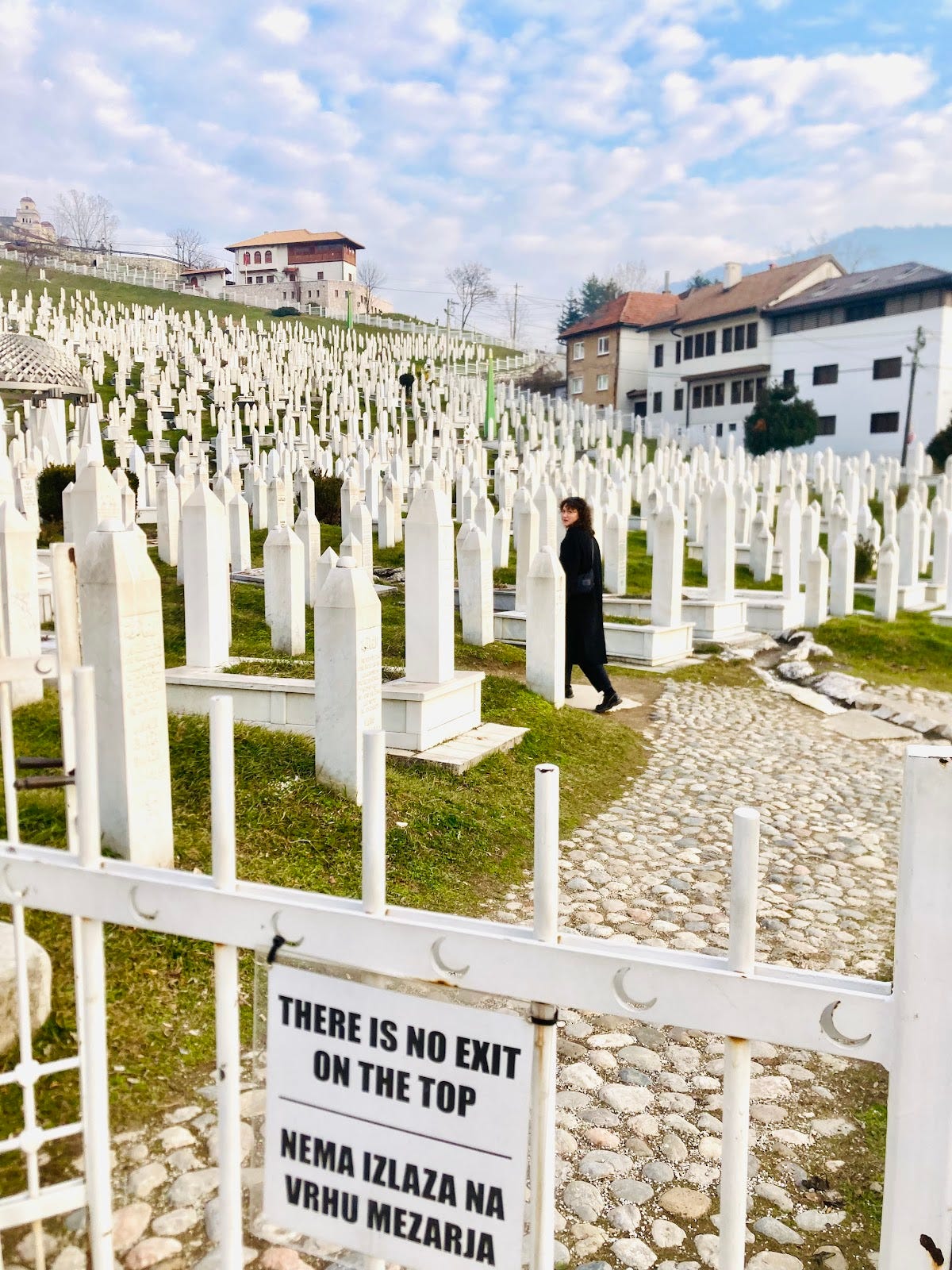


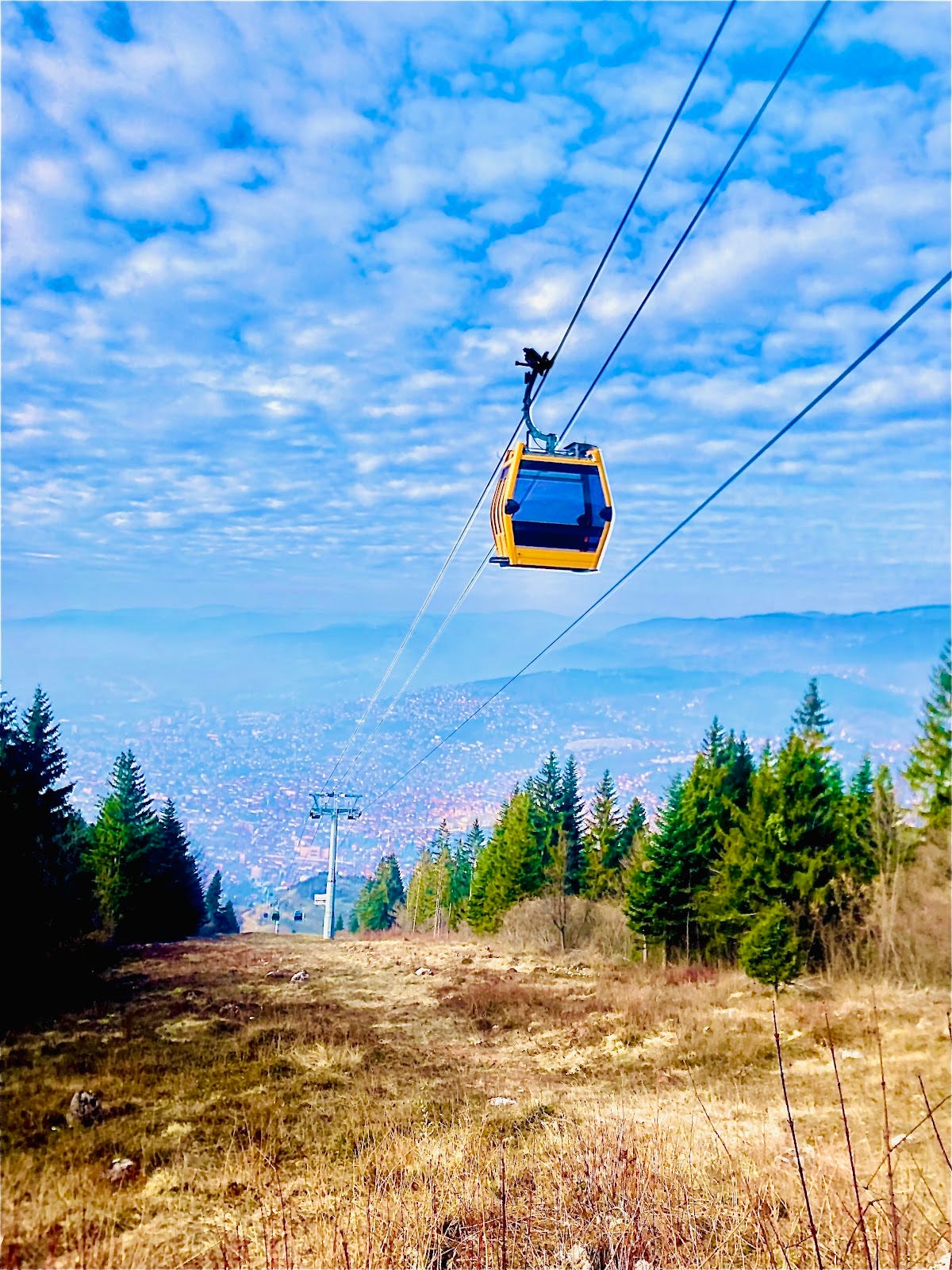

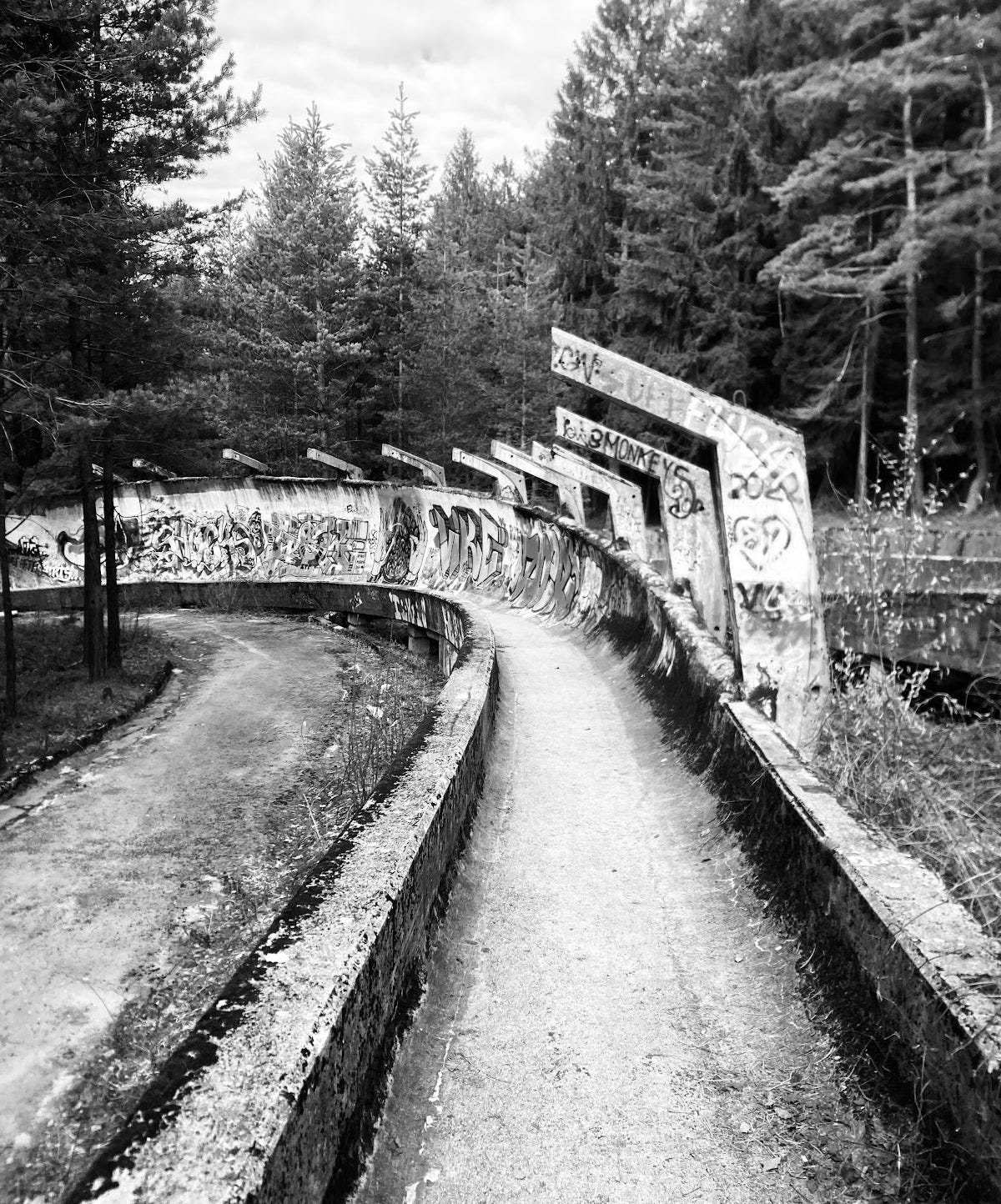
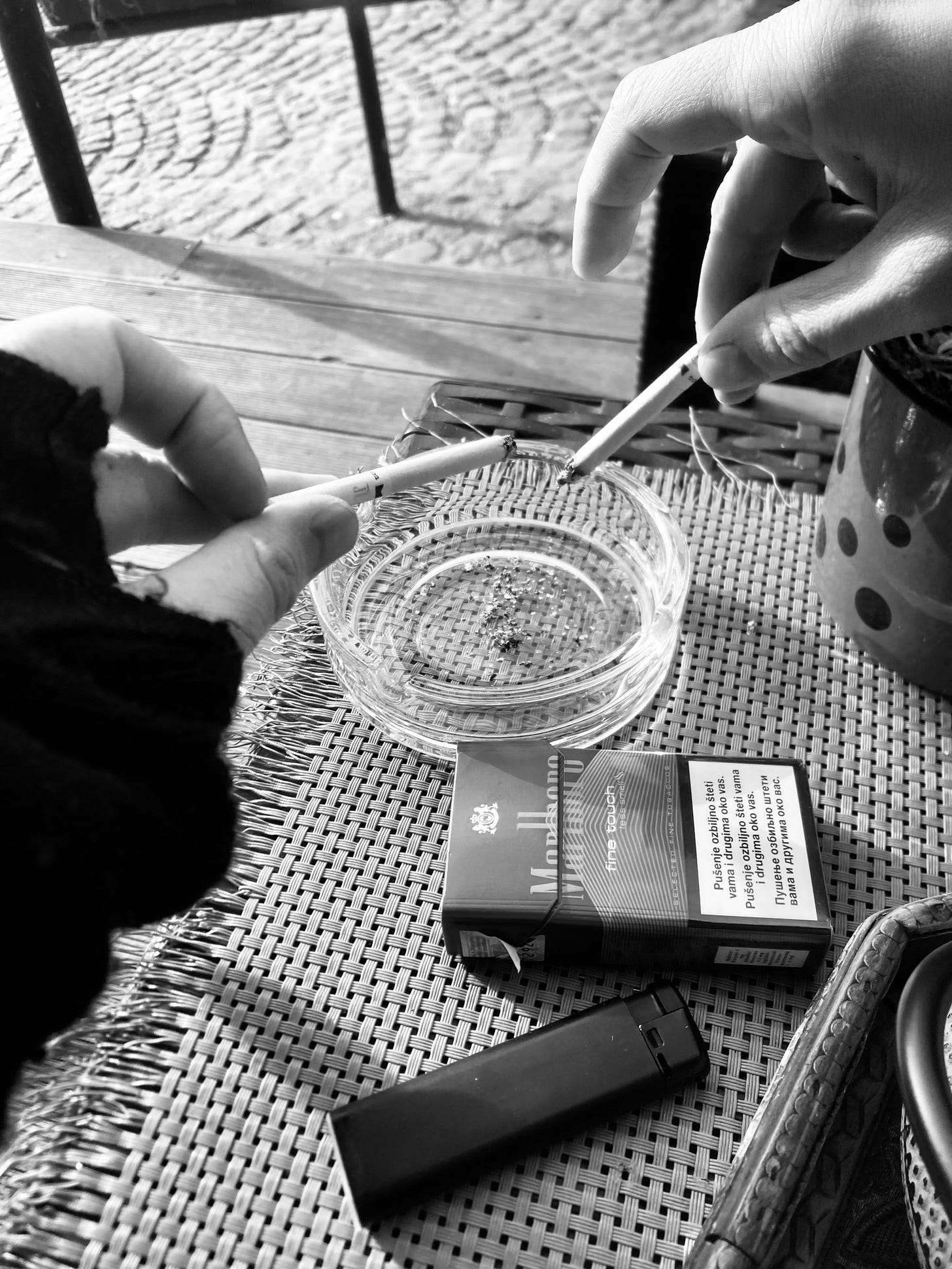
Thank you for this, and great writing; this is the first of yours I've read and loved it. I appreciate the dive into its history; I remember when the war started there and was glued to my TV each night for information on it. It was remarkable to me that such a thing could happen in modern Europe. Hindsight shows that it was practically inevitable, but I was more naive back then. I would love to travel there some day.